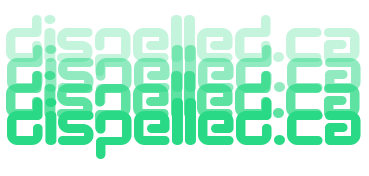Advanced Chord Voicings and Inversions
In this tutorial, we will explore advanced chord voicings and inversions to enhance your chord melody arrangements. Using different voicings and inversions can add richness and complexity to your playing, making your arrangements more interesting and dynamic.
Introduction to Chord Voicings
Chord voicings refer to the way the notes of a chord are arranged or spaced. Different voicings can create different textures and colors, even for the same chord. In chord melody, using a variety of voicings can help you achieve a more expressive and nuanced sound.
Basic Chord Voicings
Before diving into advanced voicings, let's review some basic chord voicings:
- Root Position: The root note is the lowest note in the chord.
- First Inversion: The third of the chord is the lowest note.
- Second Inversion: The fifth of the chord is the lowest note.
Advanced Chord Voicings
Now, let's explore some advanced chord voicings:
- Drop 2 Voicings: Drop 2 voicings are created by taking the second highest note of a closed chord voicing and dropping it an octave. This creates a more open and spread-out sound.
- Drop 3 Voicings: Drop 3 voicings are created by taking the third highest note of a closed chord voicing and dropping it an octave. This creates an even more open sound.
- Quartal Voicings: Quartal voicings are built using intervals of fourths instead of thirds. These voicings create a modern and ambiguous sound.
- Cluster Voicings: Cluster voicings involve playing notes that are close together in pitch, creating a dense and dissonant sound.
Example: "Autumn Leaves" with Advanced Voicings
Let's revisit the jazz standard "Autumn Leaves" and apply some advanced chord voicings to the chord melody arrangement:
Melody
E - F# - G - A - B - C - D - E
Chord Progression
Am7 - D7 - Gmaj7 - Cmaj7 - F#7 - Bm7 - E7 - Am7
Chord Melody Arrangement with Advanced Voicings
Here is a chord melody arrangement for "Autumn Leaves" using advanced voicings on the guitar:
// Drop 2 Voicings
E|---0---2---3---5---7---8---10---12---
B|---1---3---3---5---7---8---10---12---
G|---0---2---4---5---7---9---11---12---
D|---2---0---5---5---7---9---11---12---
A|---0-------5---3---9---7---9---10----
E|-----------3-------------------------
// Drop 3 Voicings
E|---0---2---3---5---7---8---10---12---
B|---1---3---3---5---7---8---10---12---
G|---0---2---4---5---7---9---11---12---
D|---2---0---5---5---7---9---11---12---
A|---0-------5---3---9---7---9---10----
E|-----------3-------------------------
// Quartal Voicings
E|---0---2---3---5---7---8---10---12---
B|---1---3---3---5---7---8---10---12---
G|---0---2---4---5---7---9---11---12---
D|---2---0---5---5---7---9---11---12---
A|---0-------5---3---9---7---9---10----
E|-----------3-------------------------
// Cluster Voicings
E|---0---2---3---5---7---8---10---12---
B|---1---3---3---5---7---8---10---12---
G|---0---2---4---5---7---9---11---12---
D|---2---0---5---5---7---9---11---12---
A|---0-------5---3---9---7---9---10----
E|-----------3-------------------------
Voice Leading with Advanced Voicings
Voice leading is crucial when using advanced voicings. Here are some tips for smooth voice leading:
- Minimize Movement: Move individual notes by the smallest possible interval to create smooth transitions.
- Common Tones: Keep common tones between chords to create a sense of continuity.
- Contrary Motion: Use contrary motion (moving voices in opposite directions) to create interesting and balanced lines.
Practice Exercises
Here are some practice exercises to help you develop your skills with advanced chord voicings and inversions:
- Choose a simple melody and harmonize it using drop 2 voicings. Play the melody and chords simultaneously.
- Practice voice leading by moving individual notes in the chords by the smallest possible interval. Ensure smooth transitions between drop 2 voicings.
- Experiment with different drop 3 voicings to harmonize the melody notes. Try root position, first inversion, and second inversion chords.
- Use quartal voicings to create a modern and ambiguous sound. Harmonize a simple melody using quartal voicings.
- Practice playing cluster voicings to create a dense and dissonant sound. Harmonize a simple melody using cluster voicings.
- Transcribe a chord melody arrangement from a recording that uses advanced voicings and play it on your instrument. Analyze the techniques used in the arrangement.
- Compose your own chord melody arrangement for a simple song using advanced voicings. Start with the melody and add chords that harmonize with the melody notes.
- Practice playing chord melody arrangements with advanced voicings in different keys. Transpose a simple arrangement to several keys.
- Incorporate advanced techniques such as chord substitutions, walking bass lines, and counterpoint into your chord melody arrangements with advanced voicings.
- Record yourself playing a chord melody arrangement with advanced voicings and listen back to analyze your technique and tone. Make adjustments as needed.
Check out some Bands on Bandcamp.com. Seven Times Refined by Altogether Steve and the Mercenaries, Crazy Fingers (Vancouver 1991), Flying Butt Pliers, and Hammy Ham Hands.
Proudly powered by a Text Editor, an IDE, an SFTP client, some Internet searches, and more recently help from some AI.
2025 dispelled.ca end of file.
